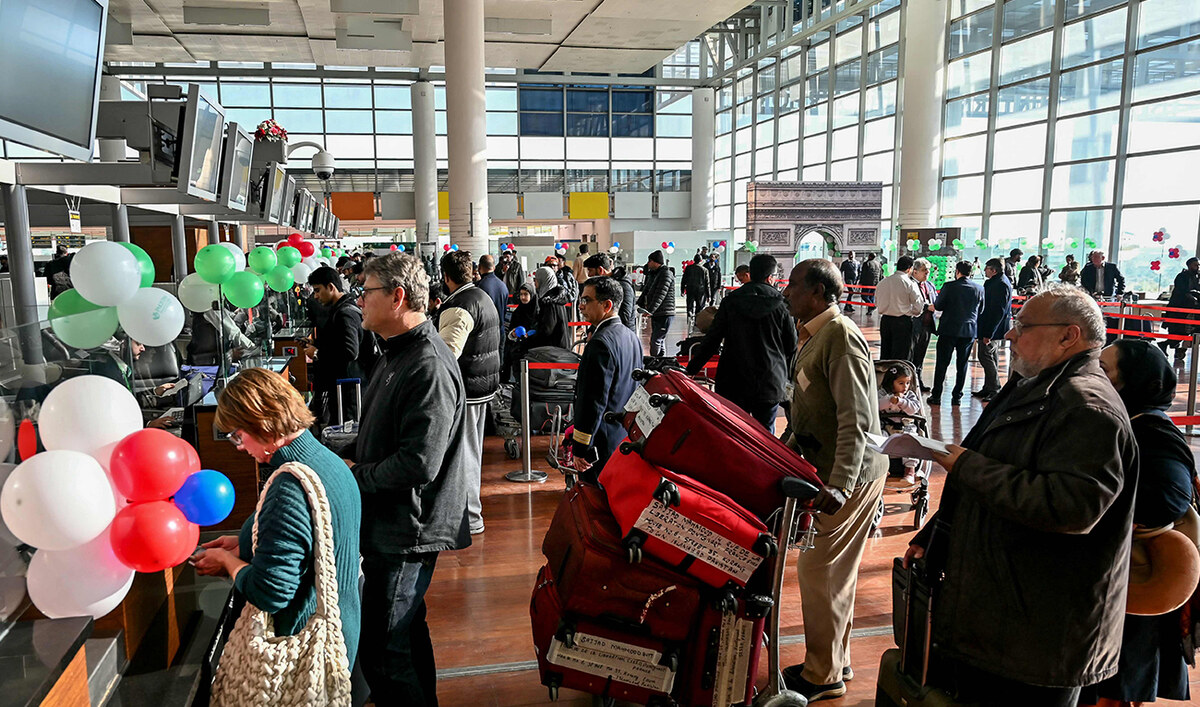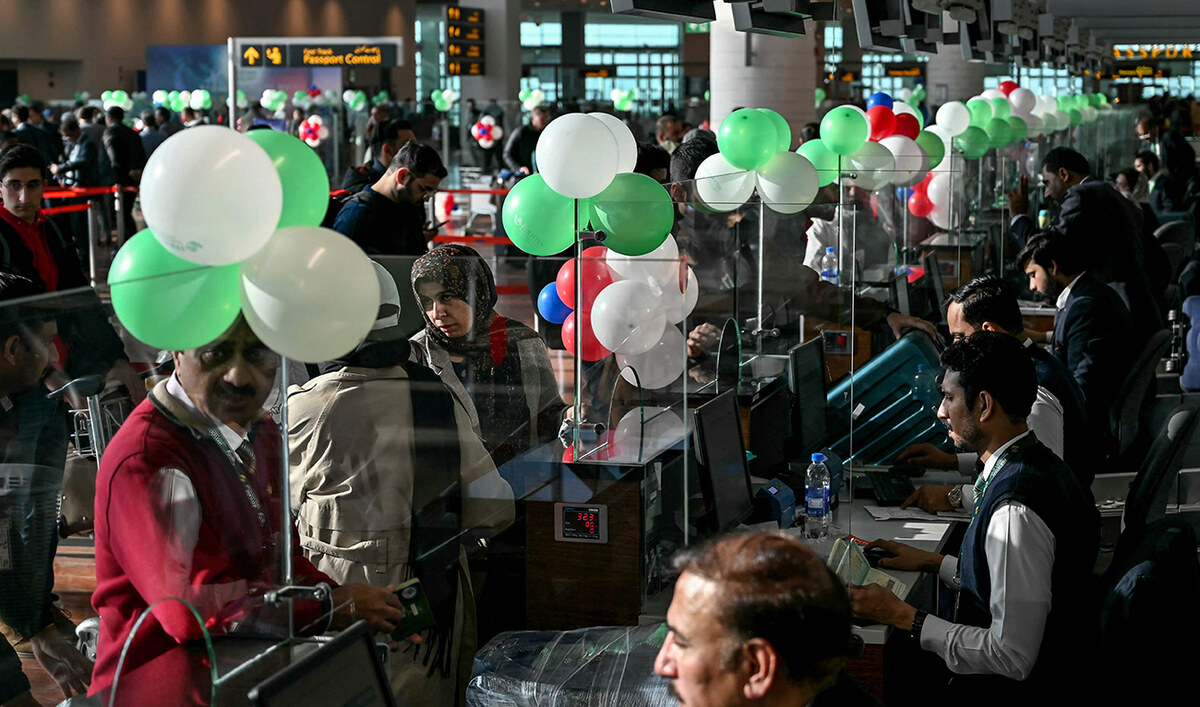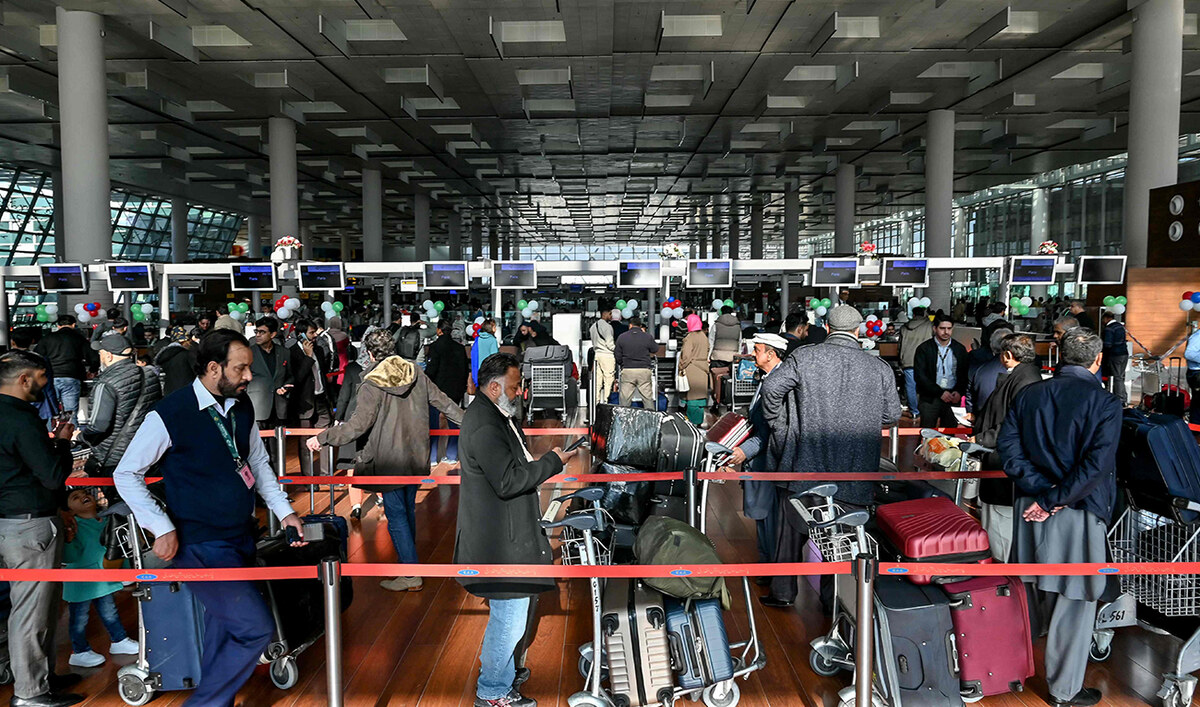ISLAMABAD: The Pakistan International Airlines (PIA) on Friday resumed its Europe operations with a flight to Paris, the Pakistani national air carrier said, following the removal of a four-year ban by European regulators.
The European Union Aviation Safety Agency (EASA) suspended PIA’s authorization to operate in the EU in June 2020 over concerns about the ability of Pakistani aviation authorities to ensure compliance with international standards.
EASA and UK authorities suspended permission for PIA to operate in the region after Pakistan began investigating the validity of pilots’ licenses following a deadly plane crash that killed 97 people.
On Friday, PIA said it was resuming two direct weekly flights to Paris.

Passengers wait at the immigration counter before boarding their first flight to Paris at the Islamabad International Airport on January 10, 2025, as EU authorities lift a four-year ban. (AFP)
“This is the first time I am traveling with PIA,” Shumaila Rana, a 38-year-old passenger, told AFP before the flight took off from Islamabad for Paris at 12:40pm Pakistan time.
“I’m nervous and I’m having a lot of anxiety, but I’m hoping it’s gonna be a good flight.”
The airline said it had also made special arrangements for in-flight entertainment “through the Intranet Wireless Entertainment System.”

Passengers wait at the immigration counter before boarding their first flight to Paris at the Islamabad International Airport on January 10, 2025, as EU authorities lift a four-year ban. (AFP)
PIA, which employs 7,000 people, has long been accused of being bloated and poorly run — hobbled by unpaid bills, a poor safety record and regulatory issues.
Pakistan’s government has said it is committed to privatising the debt-ridden airline and has been scrambling to find a buyer. Late last year, a deal fell through after a potential buyer reportedly offered a fraction of the asking price.
The government hopes the opening of European routes, which officials expect will be followed by a similar announcement by the UK later this year, will boost its selling potential.

Passengers wait at the immigration counter before boarding their first flight to Paris at the Islamabad International Airport on January 10, 2025, as EU authorities lift a four-year ban. (AFP)
PIA posted losses of $270 million in 2023, according to local media. Its liabilities were nearly $3 billion, about five times the total worth of its assets.
In the same year, amid a national economic crisis, dozens of domestic flights were canceled when it could not afford fuel for its planes.
PIA came into being in 1955 when the government nationalized a loss-making commercial airline, and enjoyed rapid growth until the 1990s.
















